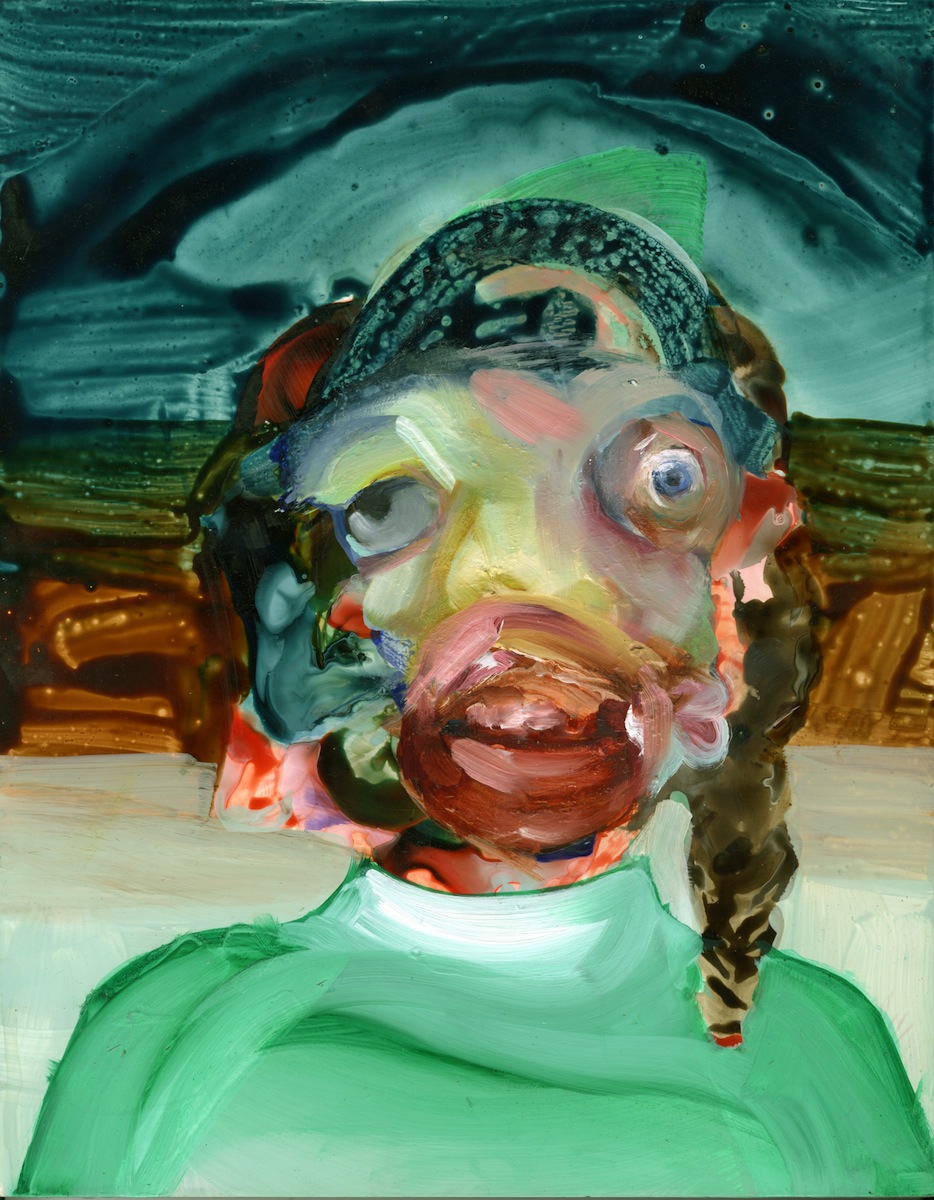Elizabeth Glaessner’s Post-Apocalyptic Stories
As a child, Elizabeth Glaessner would tell her little sister stories from the bottom bunk bed in their Houston home. “She wouldn’t be able to sleep because I’d be sitting up there telling these stories, making her a part of them,” says Glaessner. “Storytelling was my escape.”
Now 30, Glaessner never shed her childhood imagination. For her first solo show in New York at PPOW, the artist has created a series of works depicting surreal, anthropomorphic creatures within vibrant, watery panoramas. Mysterious relics of human existence—a trampoline, an empty boat—dot the landscape. They melt together in colorful swirls of ink and pigment, revealing an eerie reality after humankind.
Despite a post-apocalyptic premise, it’s not a totally dark world Glaessner has foreshadowed. “I’m interested in what could possibly be born out of a toxic landscape left behind,” she explains, referring to humans’ poor treatment of Earth—the most likely cause of our undoing. “But then through all of these mutations, something positive can be born.” Titled “All this happened, more or less,” the first line of Kurt Vonnegut’s Slaughterhouse Five, the show suggests not a vision of destruction, but a possibility of renewal.
The painting series includes portraits of creatures—Jelly Mouth, Donkey Face, and Celeste, for instance, portray distorted beings peering out through dripping eye sockets. Others, like Blood Bath and Trampoline Ritual, show characters in action. “They’re trying to figure out their purpose,” explains Glaessner. “With Trampoline Ritual, they found a trampoline and decided it’s very important to their existence.”
Each canvas’s narrative takes shape with the paint. “The whole time I’m making the painting, I think about what kind of story it can be,” she says. “It’s constantly changing… Sometimes when I’m putting the paint down, the paint will surprise me, and that will change the story.” Details oscillate between solid and aqueous—an effect of Glaessner’s spontaneous process.
Glaessner honed her style in the MFA program at the New York Academy of Art, where she graduated from this year. She remembers a moment in her final critique, moderated by the artist Julie Heffernan, who praised her “courage to decide whether things have to be real or not.”
“Allowing things to not necessarily make sense–that helps me in letting compositional decisions inform a narrative,” says Glaessner. “Not making myself tie to reality… I guess that was a critical moment.”
ELIZABETH GLAESSNER‘S “ALL THIS HAPPENED, MORE OR LESS” WILL BE ON VIEW AT PPOW FROM JULY 9 THROUGH AUGUST 15, 2014.







